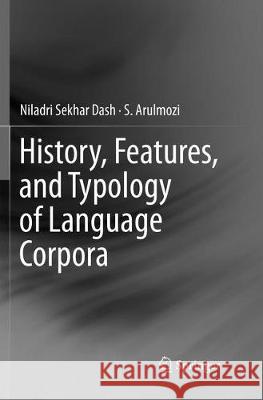History, Features, and Typology of Language Corpora » książka
topmenu
History, Features, and Typology of Language Corpora
ISBN-13: 9789811356384 / Angielski / Miękka / 2019 / 293 str.
Kategorie:
Kategorie BISAC:
Wydawca:
Springer
Język:
Angielski
ISBN-13:
9789811356384
Rok wydania:
2019
Wydanie:
Softcover Repri
Ilość stron:
293
Waga:
0.54 kg
Wymiary:
23.37 x 21.59 x 1.52
Oprawa:
Miękka
Wolumenów:
01











